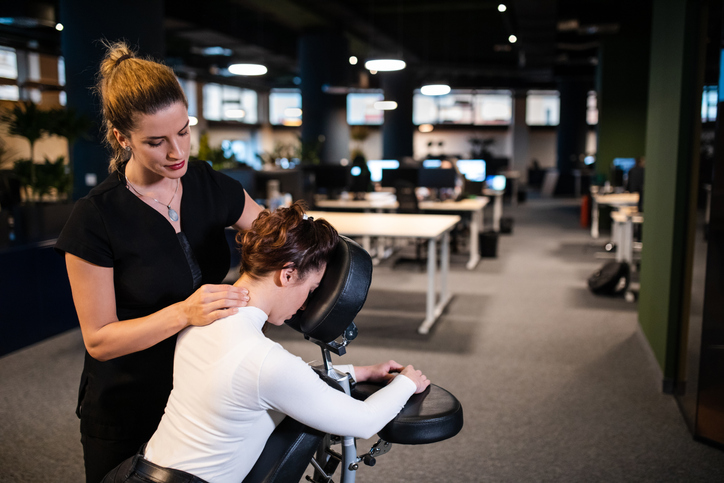Pain
Stress-Related Neck Pain

A variety of factors can aggravate neck pain, including habits such as poor posture, sleeping in an awkward position, and smoking. One contributing factor that is often overlooked is mental stress. Stress leads to muscle tension, which can cause or worsen pain in the neck and shoulders. Additionally, neck pain — or any type of chronic pain for that matter — can exacerbate stress. It can become a vicious cycle.
Fortunately, stress management not only improves mental well-being but can also help prevent or reduce neck pain. The following may help reduce stress and, therefore, reduce stress-related pain:
Physical activity
Engaging in regular physical activity is one of the most effective stress management tools. Exercise boosts the release of endorphins, which are the body’s “feel good” hormones. Additionally, stretching the neck and shoulders promotes muscle relaxation and flexibility, which helps prevent muscle strain.
Massage
Massage therapy relaxes both the body and mind and reduces tension in the neck muscles, which can ease neck pain. Massage performed by a licensed massage therapist or even doing self-massage techniques increases blood circulation, promotes the release of endorphins, and enhances sleep quality.
Mindfulness
Practicing mindfulness, such as meditation, guided imagery, breathing exercises, or progressive muscle relaxation, can help reduce mental and physical tension. Yoga is an excellent way to incorporate both physical activity and mindfulness into one activity.
Psychotherapy
Psychotherapy, or talk therapy, can help manage emotional stress, which, in turn, helps decrease physical tension. Various other types of mental health therapy can also help manage chronic pain and/or high stress levels, including cognitive behavioral therapy and mindfulness-based stress reduction. Group therapy provides the extra benefit of connecting with other people, which in itself can help reduce stress.
Other methods
Other methods of reducing and/or preventing tension in the neck include the following:
- Using proper ergonomics.
- Maintaining good posture.
- Taking breaks throughout the day to move the body.
- Using temperature therapy for strained or tired muscles.
- Supporting the neck during sleep, ensuring the head and neck are properly aligned.
Additional source: Verywell Mind


















